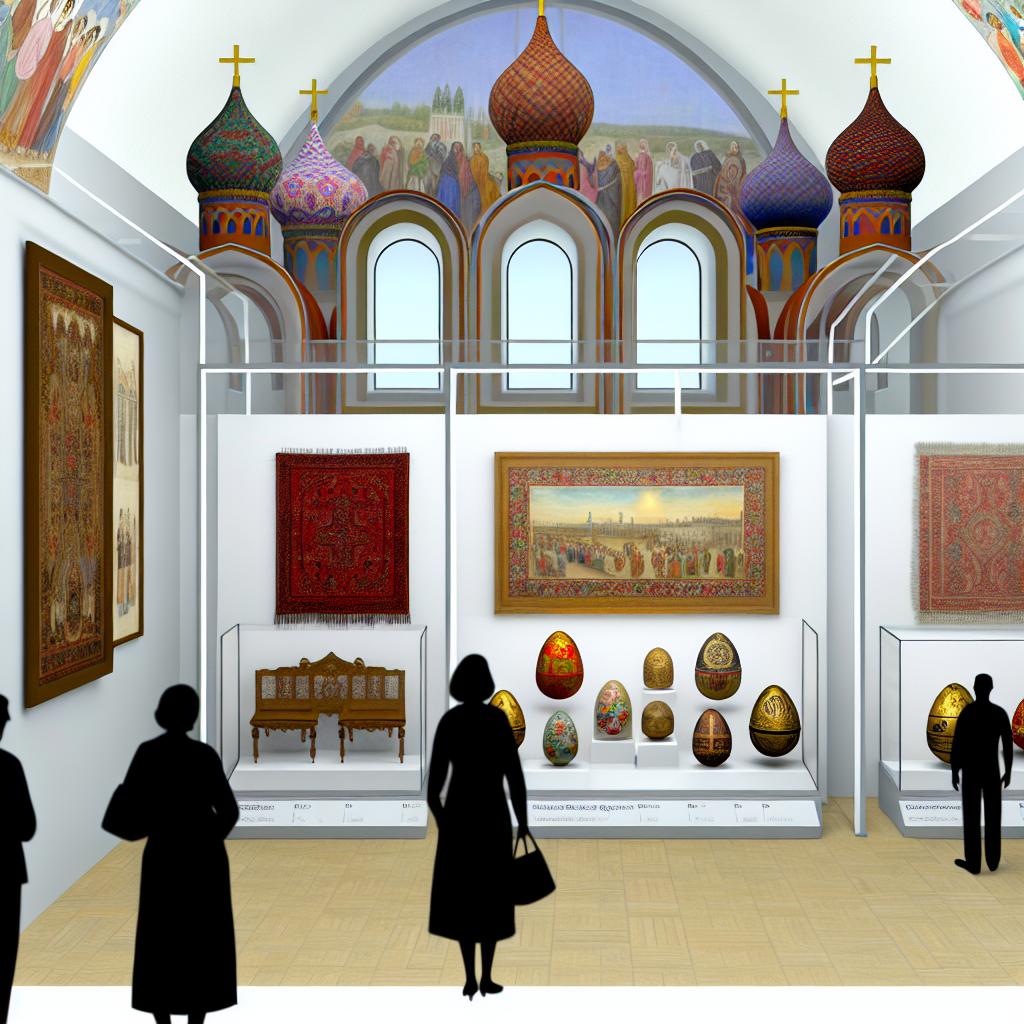Overview of the Russian Museum
The Russian Museum, located in St. Petersburg, serves as a major cultural and historical institution dedicated to the preservation and exhibition of Russian art. Established in 1895, it was opened to the public in 1898. The museum houses a vast collection of Russian artwork that spans from the 10th century to the current era. This collection not only represents historical art forms but also showcases contemporary contributions, reflecting the ongoing evolution of the country’s artistic landscape. By offering an expansive array of artifacts and artworks that cover multiple centuries, the museum stands as a testament to the perseverance and adaptability of Russian art and culture.
Historical Background
The Russian Museum was founded by Tsar Nicholas II in memory of his father, Alexander III. Initially, the collection focused on the heritage of the Russian Empire, but it has since expanded to include various facets of Russian art and culture. The museum itself is situated in the Mikhailovsky Palace, a neoclassical architectural marvel constructed by the renowned architect Carlo Rossi. This palace, with its grandeur and elegance, has played a pivotal role in not just housing the museum but also enhancing the overall visitor experience. The richly decorated interiors and structural finesse contribute to an immersive environment, allowing visitors to appreciate art within grand historical settings.
Additionally, the foundation of the museum during the late 19th century marks a period when Russian society was experiencing myriad transformations. This era is characterized by a heightened interest in cultural and historic preservation, set amidst sweeping political and social changes. The establishment of the Russian Museum symbolizes an earnest effort to capture the nation’s artistic achievements at a time when industrial progress and globalization were beginning to reshape traditional Russian life.
Key Collections
The museum features an extensive range of artworks, from icon paintings to avant-garde pieces. Notable collections include the works of significant Russian artists such as Ivan Aivazovsky, Kazimir Malevich, and Ilya Repin. The museum has also amassed a significant array of sculptures, decorative arts, and folk art. These varied collections provide insights into different art movements and styles, illustrating how Russian art has developed and been influenced by historical events and cultural shifts.
Let’s delve into some of these key segments of the museum’s collection:
Icon Paintings
Icon paintings form a crucial segment of the Russian Museum’s collection. These religious artworks originate as far back as the 10th century. They played a significant role in the devotional practices of the Orthodox Church, displaying a unique aesthetic style characterized by symbolic representations and distinctive coloration. These icons are not just artistic expressions but are deeply embedded within the spiritual and cultural ethos of Russia, reflecting theological beliefs and practices across different epochs. Viewing these icons allows visitors to understand the intertwining of religion and art in Russian history.
Avant-garde Art
The museum’s collection of avant-garde art represents a revolutionary phase in 20th-century Russian art. This segment includes groundbreaking works by artists like Kazimir Malevich, whose Black Square is emblematic of the daring spirit of the time. Avant-garde artists aimed to disrupt traditional artistic norms, experimenting with new forms, techniques, and theories. This movement coincided with broader social upheavals and showcases the vibrant push toward modernism and innovative expressions.
Sculptures and Decorative Arts
Sculptures and decorative arts further enrich the museum’s offerings. Sculptural works depict both historical figures and innovative abstract forms, providing a tangible connection to Russia’s past and its creative explorations. Decorative arts include a range of beautifully crafted objects – from porcelain and textiles to intricately designed furniture – each item reflecting the artisanal skills and aesthetic sensibilities of its time.
Folk Art
Folk art exhibited in the museum represents the everyday artistic expressions of Russian people, often integrating elements of folklore and tradition. These works offer valuable insights into regional cultures, illustrating how diverse communities within Russia express their identity through art. Folk art often extends beyond mere aesthetics to include functional items like clothing, tools, and household decorations, thereby offering a broader understanding of cultural practices and innovations.
Notable Exhibitions
Over the years, the Russian Museum has hosted numerous significant exhibitions that have attracted global attention. These exhibitions often feature collaborations with international art institutions, facilitating cultural exchange and expanding the museum’s repertoire. Such initiatives not only underscore the museum’s commitment to showcasing the richness of Russian art but also enable meaningful interactions with global artistic movements. Partnership with international institutions brings diverse audiences together, fostering a shared appreciation and understanding of cultural variability.
Exhibitions have often been thematic, focusing on specific periods, styles, or notable artistic figures, allowing for in-depth exploration and appreciation. Temporary exhibitions also ensure that the museum remains dynamic, offering new perspectives and experiences for returning visitors.
Visiting the Russian Museum
Visitors to the museum can explore different sections dedicated to distinct periods of Russian history and artistic movements. The curatorial design ensures a navigable structure, guiding visitors across eras and styles. With so much to explore, visitors are encouraged to engage with the art pieces, reflect on their historical contexts, and appreciate the aesthetic evolution within Russia. Various programs and guided tours are available to enhance the visit experience, providing deeper insights into each collection’s significance. The museum also offers educational resources and workshops for those interested in delving deeper into art history and conservation.
For more detailed information, including ticket options and operating hours, visit the official Russian Museum website. Checking the website is advisable for updates on exhibitions, any temporary closure notices, or special events. The Russian Museum continues to play a vital role in preserving Russia’s rich artistic heritage, offering insights into the country’s extensive cultural history. It stands not only as a repository of art but also as an active participant in the discourse around cultural preservation, artistic innovation, and education.

